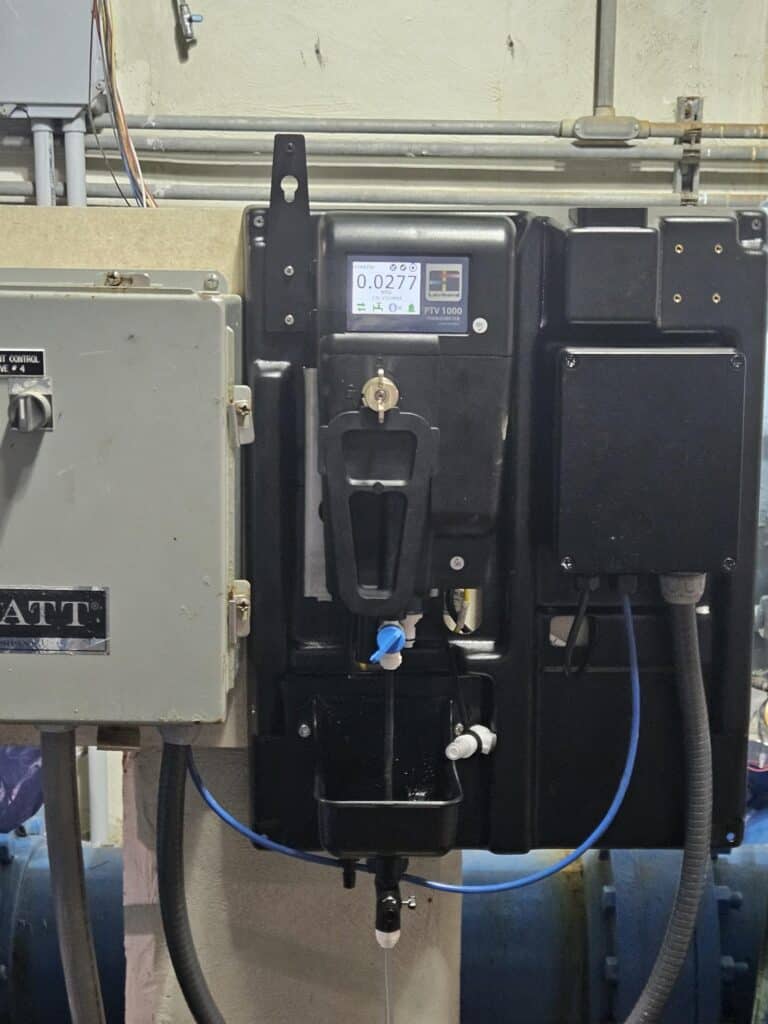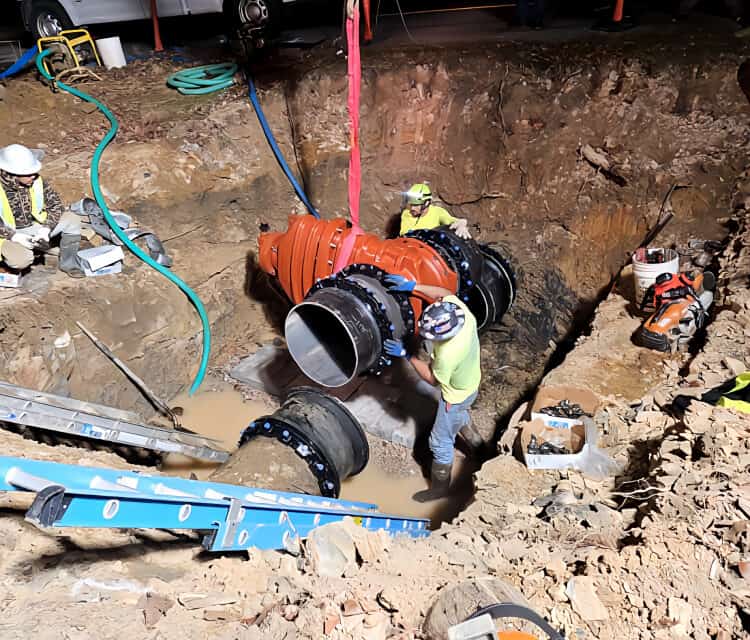Where is our money going? What is happening with the HSV water system?
Often, people ask me what the POA is doing with the money it collects in assessments, utility bills, etc. The short answer is “quite a lot.” The Gazette has discussed projects encompassing many subjects, including roads and the sewer system, to name a few. Today, we will focus on water projects that supply our most critical commodity in supporting life. This article discusses the maintenance and updating that the Hot Springs Village Public Services Division continues to make under the auspices of Director Ken Unger to provide clean water to the Village.
“Projects are going on. We are investing money back into the infrastructure.”
Ken Unger, Hot Springs Village POA Public Services Director
It has been a process, but Ken Unger, Hot Springs Village POA Public Services Director, has been working on repairing and maintaining our water system since he began working for the POA almost two years ago. We tend to take the convenience and ease of turning on our water tap for granted. Unless taking a water plant tour, most people do not realize how many components are in the system. Many elements in the Hot Springs Village water system were original and were past or nearing the end of useful life.
Unger believes in doing more with less and is a problem solver. “That is what I did in my career. I was a troubleshooter. I went out and fixed things.” And this is exactly what Unger is doing in the Village.
It’s not easy unraveling the tangled mess of a not-so-perfect water system, plagued with leaks, inefficiencies, outdated and patched equipment, and even a component that poses a serious public health risk if something were to go wrong.
Unger said many of the projects he is executing increase system efficiency. Obtaining parts for older components can be challenging, so sometimes, buying new ones makes more sense than patching the old ones.
Crews work through the night to replace a 24″ broken valve outside the water plant
The board unanimously approved a valve replacement in November ’23 due to the old valve’s inoperability since 2014. At that time, the water plant received an output upgrade from four million gallons a day to six. This broken valve severely impacted the staff’s ability to isolate the water plant from the distribution system in an emergency or to perform required work.
On Wednesday, March 6, from 10:00 in the evening until 4:00 a.m. Thursday morning, a seven-man crew from Coakley Construction and three Village staff, overseen by Chris Boutzale, Water and Wastewater Superintendent, toiled through the night to install a new 24″ valve in the outgoing water line outside the water plant. The water plant was taken offline to perform this work.
Unger stated, “We are very fortunate to have contractors like Kevin Coakley because they are among the best in Arkansas and under high demand because of their quality performance.”
Draining the water out of the lines took over three and a half hours before the valve installation could begin. “To give you some idea, to replace the Venturi meter (see next section), you have to isolate the water plant and drain all the water out of the lines. When you don’t have a working valve at the plant, you have to close valves out in the system and drain all that water, and that is what we had to do to make the repair on Wednesday night.”
“When you work on the water plant, you have a short window to do those things. They must be done overnight. If you have to spend three and a half or four hours draining water before you can even start, the repair time is greatly diminished.”
Unger emphatically voiced, “The fact that the 24″ valve project was completed in one night with no issues was a miracle. I was praying the whole time. Chris texted me at 2:00 a.m. because he was getting ready to abandon the project because the water wouldn’t stop coming out of the 24″ cut they made to start the project. He was almost at the point where he would call the project off because it had been draining for three and a half hours. Finally, the water stopped coming out of the main. We couldn’t even start the repair until we could stop the water flow. We had to close valves way out into the system to drain all of the water and start the project.”
Now that the valve is replaced, the water line can be drained in 15 or 20 minutes instead of three and a half to four hours. The valve installation was needed before Unger could proceed with the next step, which is the Venturi meter installation.

The next step – Venturi meter installation
Next, Unger will tackle the installation of the Venturi meter, which will allow accurate measurement of water plant output.
“Since the plant was upgraded to six million gallons a day in 2014, we have not been able to accurately measure the water it produces. We don’t know how much we are delivering to the system or how much water we are losing, which means our water loss statistics are inaccurate,” emphasized Unger.
Unger explained that another problem is the age and measurement capability of the old Venturi meter. He believes the meter was installed when the plant was originally built and could only measure plant output of up to four million gallons daily. When they upgraded the plant to six million gallons, they purchased the new Venturi meter but never installed it.
“Weather permitting – the Venturi meter will be replaced overnight on Tuesday, March 12. The recent 24″ valve replacement will make the project much easier and allow us more time to perform the work, as the draining time will be greatly reduced.”
“Additionally, any other projects we ultimately do at the plant are much more doable because we can close that valve and not have to drain two miles of water line. This project is a big plus for us.”
The valve and Venturi meter project costs are around $95,000.
Conversion from chlorine gas to hypochlorite.
Another element in Unger’s water plant system maintenance and updating plan is to finish the conversion of the water plant from chlorine gas to hypochlorite for around $330,000. Using hypochlorite eliminates the highly dangerous chlorine gas, which could pose a threat to the community. This project was approved by the Board in April of ’23, but it is just now being implemented due to a delay in receiving materials. Many materials were purchased using funds in the 2023 budget (around $50,000).
Chlorine is deadly in concentrated amounts. “If you have a chlorine gas cylinder and it breaks, a chlorine cloud can emanate from the water plant. Eliminating the chlorine gas is a high priority,” said Unger.
Although hypochlorite remains in the water longer than chlorine gas, whether the conversion reduces chemical costs is yet to be determined.
Unger anticipates this project will be complete within the next couple of weeks,

Water filters
Unger said over the last eighteen months, they have upgraded all six water filters in the plant. The filters have been cleaned from top to bottom and have new filtering materials. Additionally, all the equipment tied to the water filters has been upgraded. “We are good there for the foreseeable future.”
Valve actuators
Unger noted that they are in the process of installing valve actuators. Valve actuators open and close valves on our plant water filters. The motion to purchase 24 valve actuators for $96,000 plus tax and shipping was approved by the Board on August 15, 2023. This replacement is necessary because the existing 27-year-old valve actuators are at the end of life. Due to complexity, contractors are partially executing the installation of eight of the valve actuators. It is estimated that the contractor installation cost will be around $10,000. Staff will install the other 16 valve actuators.
This project should be completed within 30 days.
Turbidity meters
Unger said turbidity meters help measure everything in the water, such as debris, that should not be there. This project came in at around $33,000. Turbidity meters are installed on each filter line.

Galeon and Gancho Way water main replacements
At the Wednesday, February 21 Board Meeting, Ken Unger and Chris Boutzale requested Board approval for two more water main replacement projects.
Galeon Way has had numerous leaks over the years, many occurring in someone’s landscaping, which requires a lot of staff effort to remove and put back. Unger said this project would free up valuable staff time for other projects. This project costs a little under $145,000.
The Gancho Way Project comprises a 1,240 8″ water main section and a new pressure-reducing station. According to the motion approved by the Board, “The utility department has spent countless hours repairing this water main over the years, not counting the hours we spent looking for the leak before finding it. This water main is located on hills and around curves that keep the water main under constant bending pressure, contributing to the problem. We plan to replace it using HDPE pipe that is more suited to the geography of this area.”
The Gancho Way Project contract is approximately $193,000.
In conclusion
This article provides insight into the fact that our assessment dollars and fees are not just swirling down the drain and shows the transparency the POA continues to exhibit. Unger communicated that he wants full disclosure of the POA’s findings and what the POA thinks should happen.
Featured image: HSV & Coakley crews work overnight to install a 24″ valve.
By Cheryl Dowden
CONTACT INFORMATION FOR HSVPOA PUBLIC SERVICES DIRECTOR
Ken Unger
Director Public Services
Hot Springs Village
501-226-9609
Kunger@hsvpoa.org
Click here to access all Ask Ken and Ask Matt articles published in the HSV Gazette.
Click here to visit the Explore the Village website.
Click here to contact the HSV Gazette.


